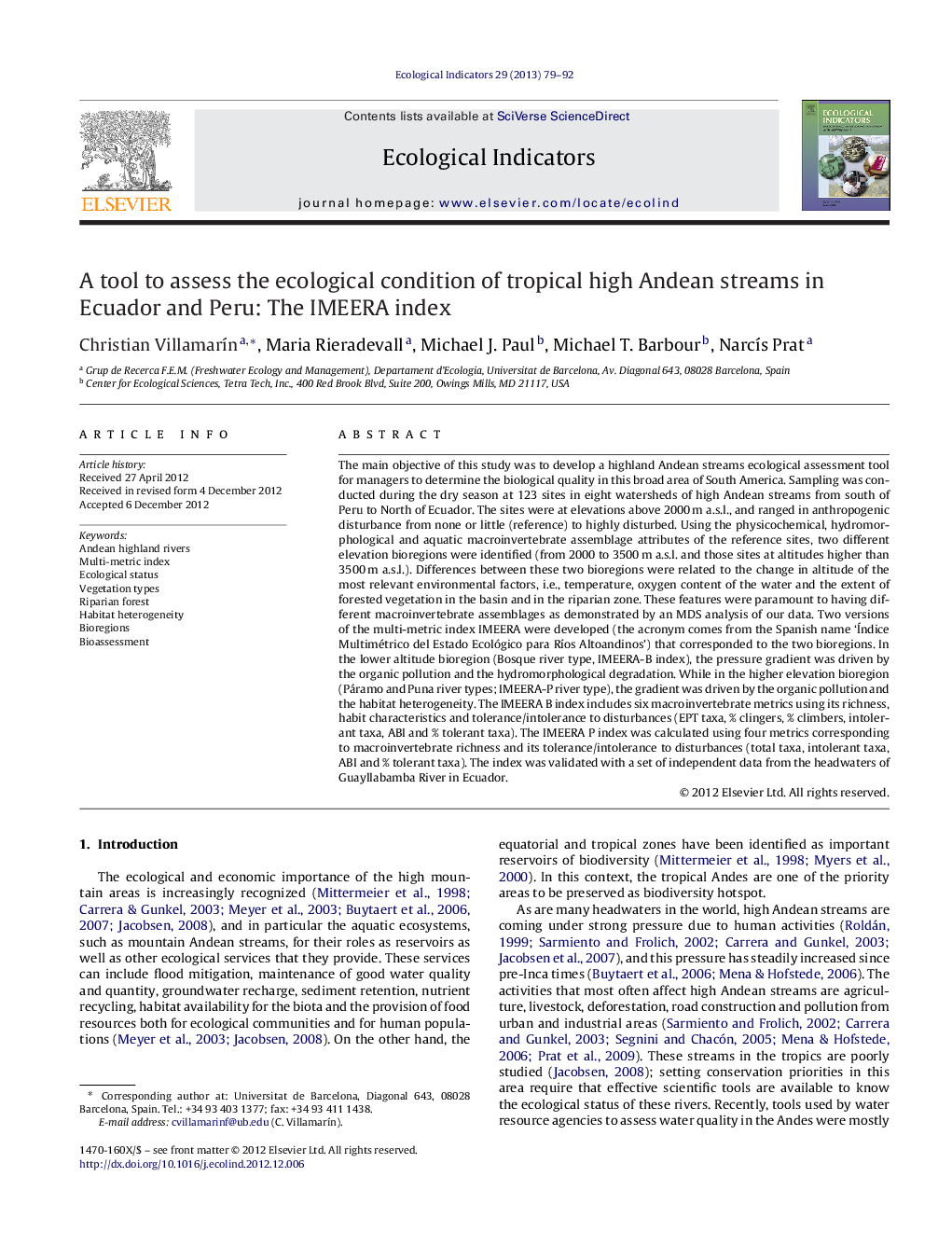| کد مقاله | کد نشریه | سال انتشار | مقاله انگلیسی | نسخه تمام متن |
|---|---|---|---|---|
| 4373466 | 1617171 | 2013 | 14 صفحه PDF | دانلود رایگان |

The main objective of this study was to develop a highland Andean streams ecological assessment tool for managers to determine the biological quality in this broad area of South America. Sampling was conducted during the dry season at 123 sites in eight watersheds of high Andean streams from south of Peru to North of Ecuador. The sites were at elevations above 2000 m a.s.l., and ranged in anthropogenic disturbance from none or little (reference) to highly disturbed. Using the physicochemical, hydromorphological and aquatic macroinvertebrate assemblage attributes of the reference sites, two different elevation bioregions were identified (from 2000 to 3500 m a.s.l. and those sites at altitudes higher than 3500 m a.s.l.). Differences between these two bioregions were related to the change in altitude of the most relevant environmental factors, i.e., temperature, oxygen content of the water and the extent of forested vegetation in the basin and in the riparian zone. These features were paramount to having different macroinvertebrate assemblages as demonstrated by an MDS analysis of our data. Two versions of the multi-metric index IMEERA were developed (the acronym comes from the Spanish name ‘Índice Multimétrico del Estado Ecológico para Ríos Altoandinos’) that corresponded to the two bioregions. In the lower altitude bioregion (Bosque river type, IMEERA-B index), the pressure gradient was driven by the organic pollution and the hydromorphological degradation. While in the higher elevation bioregion (Páramo and Puna river types; IMEERA-P river type), the gradient was driven by the organic pollution and the habitat heterogeneity. The IMEERA B index includes six macroinvertebrate metrics using its richness, habit characteristics and tolerance/intolerance to disturbances (EPT taxa, % clingers, % climbers, intolerant taxa, ABI and % tolerant taxa). The IMEERA P index was calculated using four metrics corresponding to macroinvertebrate richness and its tolerance/intolerance to disturbances (total taxa, intolerant taxa, ABI and % tolerant taxa). The index was validated with a set of independent data from the headwaters of Guayllabamba River in Ecuador.
Journal: Ecological Indicators - Volume 29, June 2013, Pages 79–92